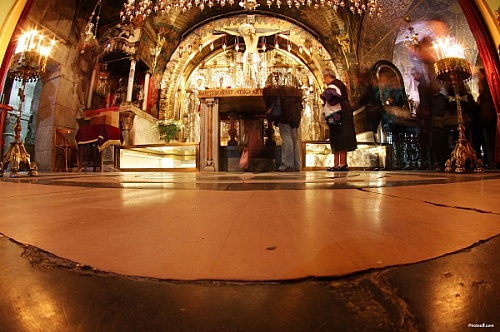
Word of the Day: Obverse
Today’s word of the day, courtesy of Merriam-Webster, is obverse, an adjective meaning “the side of a coin or currency note bearing the chief device and lettering,” or “a counterpart having the opposite orientation or force,” or “a proposition inferred immediately from another by denying the opposite of what the given proposition affirms” (https://www.merriam-webster.com/word-of-the-day). According to www.etymonline.com, “’turned toward the observer, frontal,’ 1650s, from Latin obversus ‘turned against, directed toward,’ past participle of obvertere ‘to turn toward or against,’ from ob ‘toward’ (see ob-) + vertere ‘to turn’ (from PIE root *wer- (2) ‘to turn, bend’). According to OED, not in common use until the end of the 18th century. The noun, in reference to coins, medals, etc., ‘side on which the head or principal design is struck’ (opposite of reverse), is attested from 1650s.”
On this date in the year 1009, or 1011 years ago, the Fatimid caliph Al-Hakim bi-Amr Allah ordered the destruction of the Church of the Holy Sepulchre in Jerusalem.
Some history: in 312 CE, the Roman Emperor Constantine, after a vision, converted to Christianity and made the religion legal (it did not become the state religion of the Empire until 380 CE, under Theodosius I). He then sent his mother, Helena, to Jerusalem to look for Christ’s tomb, and with the help of local religious leaders, she found it, she thought. Upon the site had been built a temple to the sun by the Romans in the 2nd century CE, but Constantine order that temple be taken down in order that a shrine to honor Jesus. They thought that they had discovered both the tomb and the site of the crucifixion, quite nearby one another.
According to the official English website of the Church, “Between 326 and 337 the Tomb of Christ was surrounded by the so-called Anastasis Rotunda. East of this was a roughly rectangular courtyard, surrounded by a peristyle, with Calvary forming the south-east corner and the Prison the north-east corner. To the east of the courtyard itself was a large five-aisled basilica, its apse facing to the west, and enclosing the crypt of St Helena” (https://churchoftheholysepulchre.net/history-of-the-church-of-the-holy-sepulchre/).
But the church has had its ups and downs over the centuries. In 614, the Sassanid, or neo-Persian, Empire, the last Persian empire before the rise of Islam in the Middle East, captured Jerusalem and sacked the church, destroying it by fire. In 630, the Byzantine Emperor Heraclitus had the church rebuilt. In the middle of the eighth and again in the beginning of the ninth centuries, the church was damaged by earthquakes, but in 810, the Eastern Orthodox Patriarch Thomas had the church repaired. In 841, 938, and 966, the building was again damaged by fire; in the last instance, the fire was a result of rioting which also damaged the church on Mount Zion and led to the death of the Patriarch John VII.
The city of Jerusalem had been conquered by the Muslims in 637 CE, and yet the Church of the Sepulchre had survived through the centuries that followed.
Fatimid caliph Al-Hakim bi-Amr Allah (985-1021; ruled 996-1021) became quite hostile to non-Muslims in his late teens. In 1004, he outlawed the use of wine in religious ceremonies, which hurt both Christians and Jews. He also forbade Christians from celebrating Easter. And then, in 1009, he ordered the destruction of the Church of the Holy Sepulchre. And it was pretty complete.
The news of the destruction of the Church of the Holy Sepulchre spread as quickly as it probably could at the time, which wasn’t very quick. But spread it did, and it led to strong reactions throughout the Christian world. In fact, even though the Byzantine Church got permission to rebuild the church, work which was completed in 1048, the Christians of Western Europe were apparently not satisfied. Indeed, one could easily make the argument that the actions of Al-Hakim bi-Amr Allah in the first two decades of the eleventh century led directly to the crusades, which began at the end of the eleventh century.
I have seen, on the Urban dictionary site for instance, the idea of the crusades referred to as Christian imperialism and the beginnings of the period when Christians would kill anybody who disagreed with them. The implication is that it all started with the Christians, who (and yes, I’ve seen this) wanted the land and the oil in the Middle East. But the historical reality is that the Muslims conquered Jerusalem, a city founded by the Jews, in the seventh century CE, and that a Muslim ruler oppressed the Christians in the eleventh century, including destroying a revered place of worship.
I’m not trying to make an argument that the Crusades were right. Christ called upon his followers to be peaceful, to forgive their enemies, to turn the other cheek. But if we are identifying the root of violence and religious oppression in the Middle East, the Crusades the are the reverse. The obverse is the destruction of the Church of the Holy Sepulchre by a Muslim caliph.
The image today is from the Church of the Holy Sepulchre website, specifically the “Rock of Calvary.”